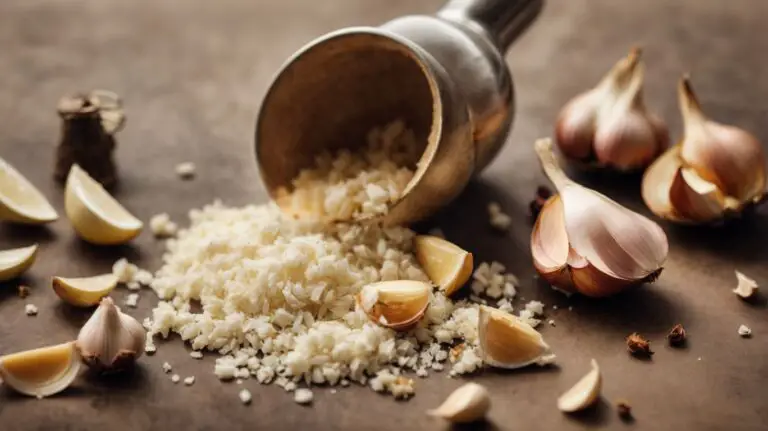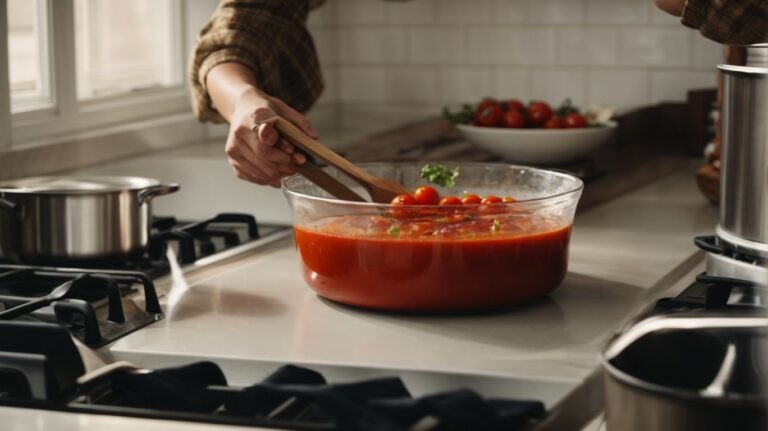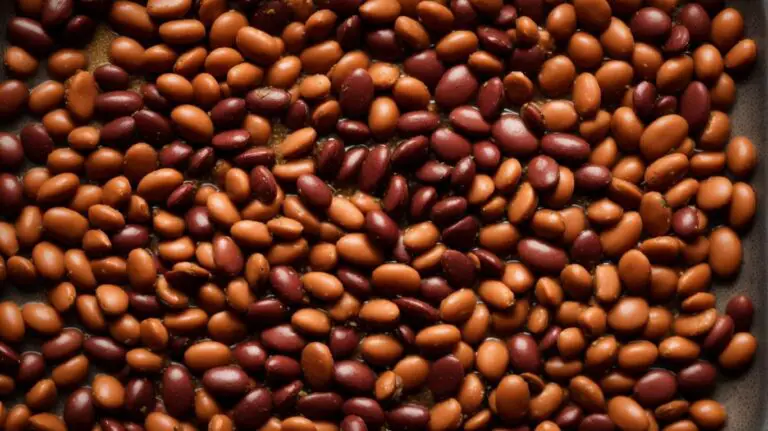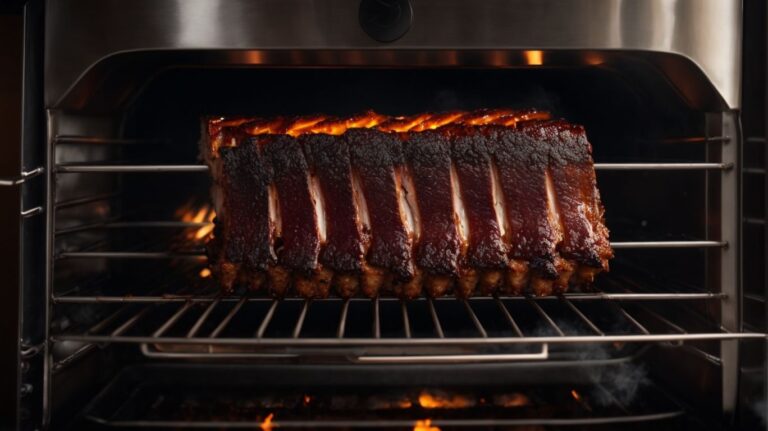How to Cook Rice on Microwave?
Are you looking for a quick and easy way to cook rice? Look no further!
We explore the types of rice that can be cooked in a microwave, the equipment needed, step-by-step instructions, and tips for perfect microwave rice every time.
Whether you prefer white, brown, basmati, or jasmine rice, we’ve got you covered.
Discover how to make delicious rice in just a few simple steps.
Key Takeaways:
What Type of Rice Can Be Cooked in a Microwave?
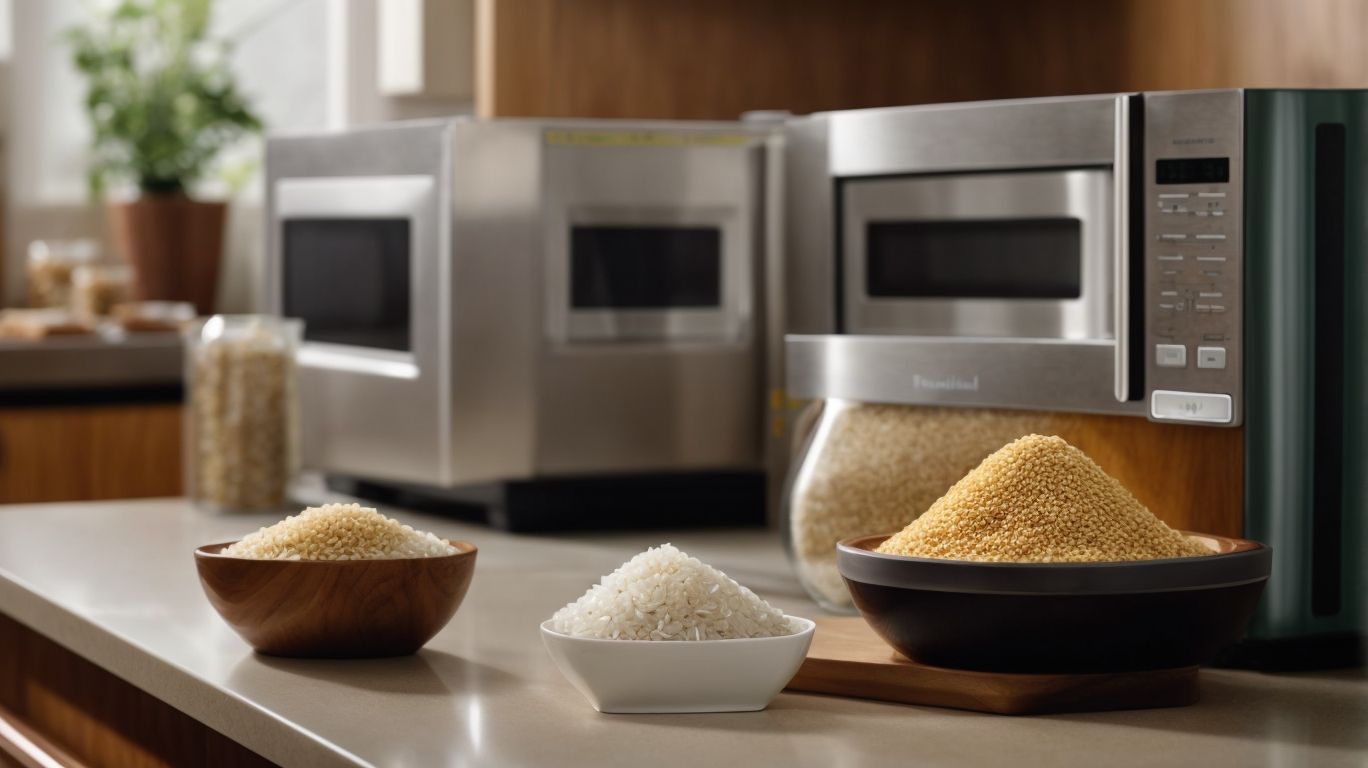
Credits: Poormet.Com – Carl Green
Different types of rice can be effectively cooked in a microwave, offering convenience and efficiency in the kitchen.
Regarding microwave cooking,
- White rice is one of the most common varieties utilized. Known for its mild flavor and fluffy texture, white rice cooks relatively quickly and requires a precise water-to-rice ratio for optimal results.
- On the other hand, brown rice offers a nuttier taste and chewier texture, taking slightly longer to cook due to its higher fiber content.
- Moving on to basmati rice, this aromatic variety holds a fragrant, long-grain quality ideal for various dishes.
- Lastly, jasmine rice, known for its subtle floral aroma and slightly sticky texture, is perfect for Asian-inspired cuisines.
White Rice
White rice is a popular choice for microwave cooking, known for its versatility and quick preparation.
To cook perfect white rice in the microwave, start by rinsing the rice under cold water to remove excess starch. Then, add the rice to a microwave-safe bowl and pour in the appropriate amount of water. Cover the bowl with a microwave-safe lid or plastic wrap, leaving a small vent for steam to escape. Microwave on high for about 10-15 minutes, or until the water is absorbed and the rice is tender. Let it sit for a few minutes before fluffing it with a fork. The result? Fluffy, delicious white rice ready to be enjoyed solo or as a versatile side dish.
Brown Rice
Brown rice is a nutritious option for microwave cooking, offering a wholesome and hearty alternative to white rice.
When cooking brown rice in a microwave, it is essential to maintain the right balance of water to achieve that perfect fluffy texture. To begin, rinse the brown rice thoroughly to remove excess starch, which can make the rice stick together. For every cup of brown rice, add 1.5 cups of water.
Cover the microwave-safe bowl with a lid or microwave-safe plastic wrap, leaving a small vent to prevent overflowing. Microwave on high for about 10-12 minutes, then let it sit for a few minutes to allow the steam to finish cooking the rice.
The end result should be tender and separate grains, providing a nutty flavor and chewy texture characteristic of brown rice. This cooking method retains more nutrients compared to traditional boiling, making it a healthy option for those looking to incorporate more whole grains into their diet.
Basmati Rice
Basmati rice, with its fragrant aroma and distinct texture, can be perfectly cooked in a microwave, retaining its unique flavor profile.
To cook basmati rice in a microwave, start by rinsing 1 cup of rice under cold water until the water runs clear, which helps remove excess starch and prevents clumping. Then, place the rinsed rice in a microwave-safe dish and add 1 ¾ cups of water, ensuring a proper water-to-rice ratio for fluffy grains.
Cover the dish with a microwave-safe lid or plastic wrap, leaving a small vent for steam to escape. Microwave on high for about 15 minutes, checking periodically to avoid overcooking.
Let the rice stand for a few minutes before fluffing it with a fork to separate the grains. This method ensures perfectly cooked basmati rice with minimal effort and maximum flavor retention.
Jasmine Rice
Jasmine rice, renowned for its delicate aroma and fluffy texture, can be easily prepared in a microwave for a fragrant and flavorful dish.
One crucial step in cooking jasmine rice in a microwave is ensuring the proper water measurement to achieve the ideal consistency. To start, rinse one cup of jasmine rice in a fine-mesh strainer to remove excess starch, then place it in a microwavable bowl. Next, add 1.5 cups of water for every cup of rice. Cover the bowl with a microwave-safe lid or plate to prevent steam from escaping, and microwave on high for 10-12 minutes, allowing the rice to cook evenly. After cooking, let the rice sit for 5 minutes before gently fluffing it with a fork to achieve that light and airy texture.
What Equipment Do You Need to Cook Rice in a Microwave?
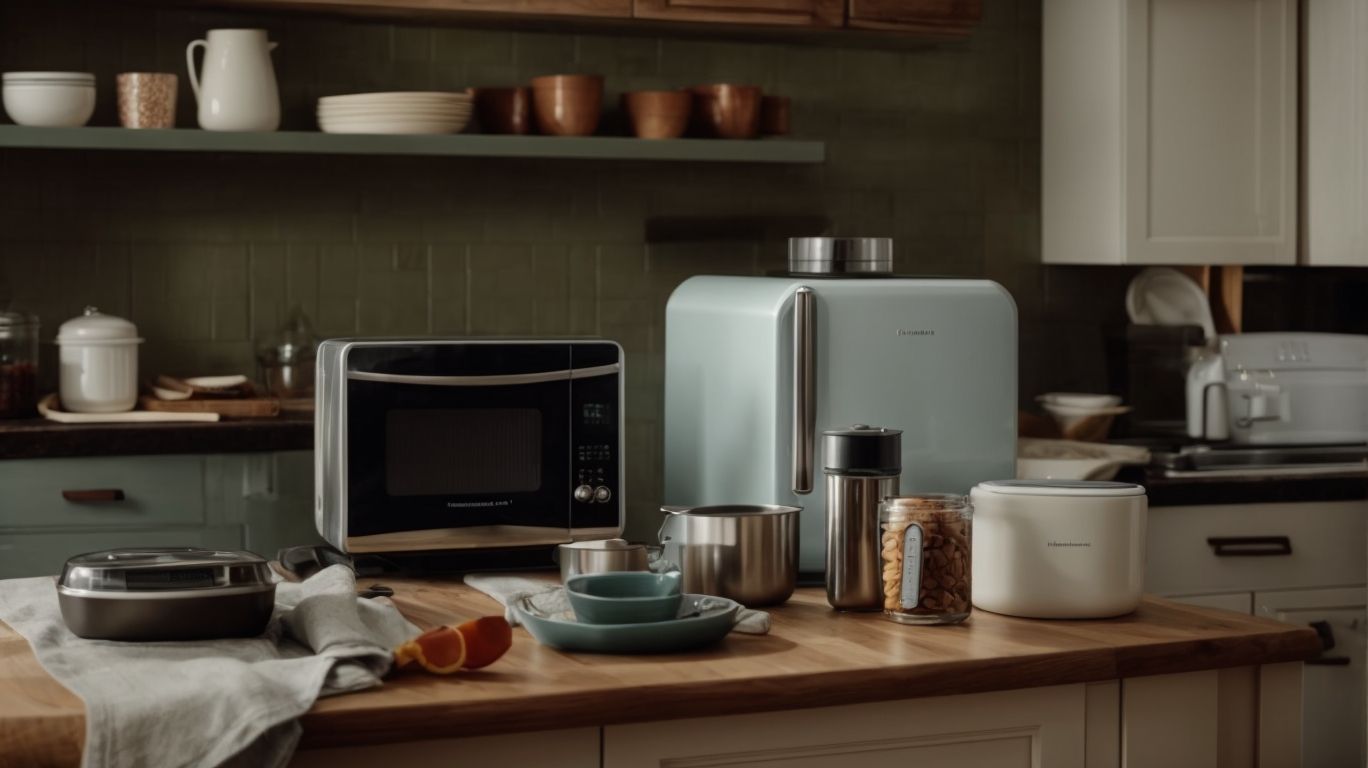
Credits: Poormet.Com – Vincent Nelson
To cook rice in a microwave, you will need essential equipment such as a microwave-safe bowl, plastic wrap or lid, measuring cup, and utensils for preparation.
When selecting a microwave-safe bowl for cooking rice, make sure it is not metallic as metal is not compatible with microwaves. Utilize a plastic wrap or microwave-safe lid to cover the bowl while cooking to trap steam and ensure even cooking. A measuring cup is a crucial tool to accurately measure the rice and water ratio for perfectly cooked rice. Choose utensils such as a fork or spoon for mixing the rice and fluffing it after cooking without damaging the bowl. These tools and utensils play a significant role in simplifying the microwave rice cooking process.
Microwave-Safe Bowl
Choosing a microwave-safe bowl is crucial for cooking rice safely and efficiently in the microwave, ensuring proper heating and even cooking.
When selecting a bowl for microwave rice cooking, it is important to look for specific features that indicate its microwave-safe qualities. Opt for bowls labeled as ‘microwave-safe’ or those made of materials like glass, ceramic, or certain plastics that are designed for microwave use. These materials are less likely to absorb microwave energy or release harmful chemicals into your food. Ensure the bowl does not have any metallic accents or finishes, as these can cause sparks in the microwave and damage both the bowl and the appliance.
Plastic Wrap or Microwave-Safe Lid
Covering the microwave-safe bowl with plastic wrap or a suitable lid is essential to trap steam and ensure thorough cooking of the rice.
When rice is cooked in the microwave, covering the bowl plays a vital role in the steaming process. By trapping the steam within the bowl, the rice absorbs moisture more effectively, resulting in evenly cooked grains. This method mimics traditional stovetop steaming, allowing the rice to steam gently and retain its natural texture and flavor.
Without proper covering, the steam would escape, leading to uneven cooking and potentially undercooked or dried-out rice. The plastic wrap or lid creates a seal that facilitates the build-up of steam, cooking the rice uniformly from all angles.
Measuring Cup
Accurate measurement of rice and water is facilitated by using a reliable measuring cup, ensuring the ideal rice-to-water ratio for perfect results.
Regarding microwave rice cooking, the measuring cup plays a crucial role in achieving the right consistency and texture. Different types of rice, such as long-grain, basmati, or jasmine, require specific water-to-rice ratios to cook perfectly. By utilizing a standard measuring cup, you can easily follow recipes and guidelines to achieve consistent results every time. It’s essential to pay attention to the markings on the cup to ensure precise measurements, as even a small difference in water content can significantly impact the final dish.
Fork or Spoon
Utensils such as a fork or spoon are handy tools for fluffing and serving the cooked rice from the microwave-safe bowl.
When the rice is done cooking, using a fork or spoon to fluff it up not only helps separate the grains and prevent clumping but also allows the rice to cool down slightly before serving.
The act of fluffing the rice with a fork or spoon introduces air into the grains, enhancing the texture and making it light and fluffy.
Once the rice is adequately fluffed, gently spooning it out onto serving plates adds a touch of presentation to your dish, elevating the dining experience.
Steps to Cook Rice on Microwave
Cooking rice in a microwave involves a series of simple steps, from measuring the ingredients to fluffing the cooked rice for optimal texture.
To begin the process, rinse the rice thoroughly in a fine-mesh strainer until the water runs clear to remove excess starch. Next, you need to add the rinsed rice to a microwave-safe container.
Then, pour in the appropriate amount of water for the type of rice you’re cooking, making sure there’s enough to cover the rice completely. You can also add a pinch of salt for seasoning at this stage.
Cover the container with a microwave-safe lid or microwave-safe plastic wrap, leaving a small vent for steam to escape. This helps in the cooking process and prevents any overflow.
Measure the Rice and Water
The first step in cooking rice in a microwave is to accurately measure the rice and water according to the desired recipe or cooking instructions.
For perfectly cooked rice, an essential factor to consider is the water-to-rice ratio. Most commonly used is the 2:1 ratio, where for every cup of rice, you’ll need two cups of water. This ratio can vary based on the type of rice being used. Without the correct proportions, your rice might end up undercooked or mushy.
To measure the ingredients precisely, using a measuring cup for both the rice and water is recommended. This ensures that your rice turns out fluffy and delicious!
Rinse the Rice
Rinsing the rice before cooking helps remove excess starch and ensures a fluffier texture in the final dish when cooked in the microwave.
When the rice is unwashed, the excessive starch can cause it to become gluey or mushy during cooking. By rinsing it thoroughly before placing it in the microwave, you not only improve the texture but also enhance the overall flavor of the dish. Removing the surface starch can prevent clumping, resulting in perfectly separated grains. This simple step is crucial in achieving that light and fluffy consistency that elevates any rice-based dish. So, the next time you prepare rice in the microwave, don’t forget to rinse it for a delightful culinary experience.
Place the Rice and Water in a Microwave-Safe Bowl
After rinsing, place the measured rice and water in a microwave-safe bowl, ensuring even distribution for consistent cooking.
When putting the rice and water in the microwave-safe bowl, it is crucial to distribute them evenly to aid in uniform cooking. This step helps prevent the rice from being undercooked in some parts and overcooked in others. Selecting an appropriate bowl size is important; you want to choose a bowl that allows room for the rice to expand without overflowing during the cooking process.
Cover the Bowl and Microwave
Cover the bowl with plastic wrap or a suitable lid before placing it in the microwave, allowing steam to circulate and facilitate cooking.
This crucial step of covering the bowl serves multiple purposes, primarily trapping the steam generated during cooking. As the rice absorbs moisture, the steam helps distribute heat evenly, resulting in perfectly cooked grains. Without proper covering, the steam would escape, leading to uneven cooking and potentially dry or undercooked rice.
The lid or plastic wrap prevents splattering within the microwave, keeping the interior clean and reducing the effort required for cleaning. It also helps retain moisture, preventing the rice from drying out during the cooking process. This simple technique significantly enhances the texture and flavor of the final dish.
Let it Rest and Fluff the Rice
Allow the cooked rice to rest in the microwave for a few minutes before fluffing it with a fork or spoon to achieve a light and airy texture.
Resting the rice post-cooking is a crucial step that allows the grains to settle and evenly distribute moisture, resulting in a more cohesive and flavorful dish. This resting period helps prevent the rice from becoming too mushy or sticky, ensuring a perfect balance of tenderness and firmness.
Once the rice has had a chance to rest, gently fluffing it with a fork or spoon helps separate the grains and release any excess steam, further enhancing its light and fluffy texture. This simple action can make a significant difference in the final presentation and taste of your rice-based dishes.
Tips for Perfect Microwave Rice
Achieving perfect microwave rice requires attention to detail and adherence to key tips that enhance the cooking process and final results.
When cooking rice in a microwave, the first step is always to rinse the rice thoroughly using a fine-mesh sieve under cold water to remove excess starch. Remember, preparation is key for achieving the perfect texture and taste.
Next, for every cup of rice, add double the amount of water. For fluffier rice, you can add a bit less water. Afterwards, cover the microwave-safe bowl with a lid or microwave-safe plastic wrap, leaving a tiny vent for steam to escape.
Adjust Microwave Power and Time as Needed
Flexibility in adjusting the microwave power and cooking time based on the rice type and desired results can lead to perfectly cooked rice every time.
Regarding achieving optimal results with different rice varieties, such as fluffy jasmine rice or sticky sushi rice, understanding the role of microwave power levels is crucial.
Lower power settings are ideal for delicate grains like Basmati, while higher power levels may suit heartier varieties such as brown rice.
Cooking durations also play a significant role in the final texture of the rice.
Shorter durations work well for instant rice, while longer cooking times are necessary for wild rice or mixed grains.
Use the Right Ratio of Rice to Water
Maintaining the correct ratio of rice to water is essential for ensuring properly cooked rice with the ideal texture and consistency in a microwave.
Regarding the water-to-rice ratio, precision is key in microwave rice cooking. Too much water can leave your rice mushy and overcooked, while too little water can result in undercooked and dry grains.
An optimal ratio ensures that the rice grains are perfectly cooked, each one retaining its individual integrity and flavor. Not only does the right proportion impact the final texture, but it also plays a crucial role in the overall taste of the dish.
By carefully controlling the water-to-rice ratio, you can elevate your microwave-cooked rice to a restaurant-quality level, impressing your family and guests with perfectly fluffy and delicious results.
Do Not Stir the Rice While Cooking
Resist the urge to stir the rice during the cooking process in a microwave, as this can disrupt the steaming and lead to unevenly cooked grains.
When rice is cooking in a microwave, the steaming process is crucial for ensuring that each grain is cooked to perfection. By refraining from stirring the rice, you allow the steam to circulate evenly, penetrating each grain and cooking it uniformly.
Stirring the rice may seem like a natural impulse, but it can actually hinder the cooking efficiency of your microwave. Instead, trust the steam to work its magic, resulting in fluffy, tender rice that is consistent in texture throughout.
Let the Rice Rest Before Fluffing
Allowing the cooked rice to rest in the microwave before fluffing ensures that the grains settle and absorb any remaining moisture for a fluffy and evenly cooked result.
When rice is given time to rest, it allows for the redistribution of moisture within the grains, helping to avoid any clumping or stickiness. This crucial step also enhances the flavors as the steam continues to circulate, further developing the taste profile. Resting rice post-cooking promotes a more uniform texture, making each bite a delightful experience. Remember, patience is key when it comes to achieving perfectly cooked, aromatic rice that complements any dish. So, next time you prepare rice, don’t rush this fundamental resting phase!
Frequently Asked Questions
1. How to Cook Rice on Microwave?
Cooking rice on a microwave is a quick and easy alternative to traditional stovetop methods. To cook rice on a microwave, simply add rice and water to a microwave-safe dish, cover, and microwave for a few minutes.
2. What is the best type of rice to use for cooking on a microwave?
Short or medium-grain white rice is the best type of rice to use when cooking on a microwave. These varieties tend to cook evenly and produce a fluffy texture.
3. How much water should I use when cooking rice on a microwave?
The general rule of thumb is to use a 2:1 ratio of water to rice. For example, if you’re cooking 1 cup of rice, use 2 cups of water.
4. Does the cooking time vary for different types of rice on a microwave?
Yes, the cooking time may vary depending on the type of rice you use. For example, brown rice may take longer to cook than white rice. Refer to the package instructions for specific cooking times.
5. Can I add seasoning or other ingredients to the rice before cooking it on a microwave?
Yes, you can add seasonings or other ingredients to the rice before cooking it on a microwave. Just be sure to adjust the amount of water accordingly.
6. How do I prevent the rice from boiling over in the microwave?
To prevent the rice from boiling over, make sure to use a large enough microwave-safe dish and do not fill it more than halfway with rice and water. You can also place a paper towel or microwave-safe lid on top of the dish to help contain any overflow.


